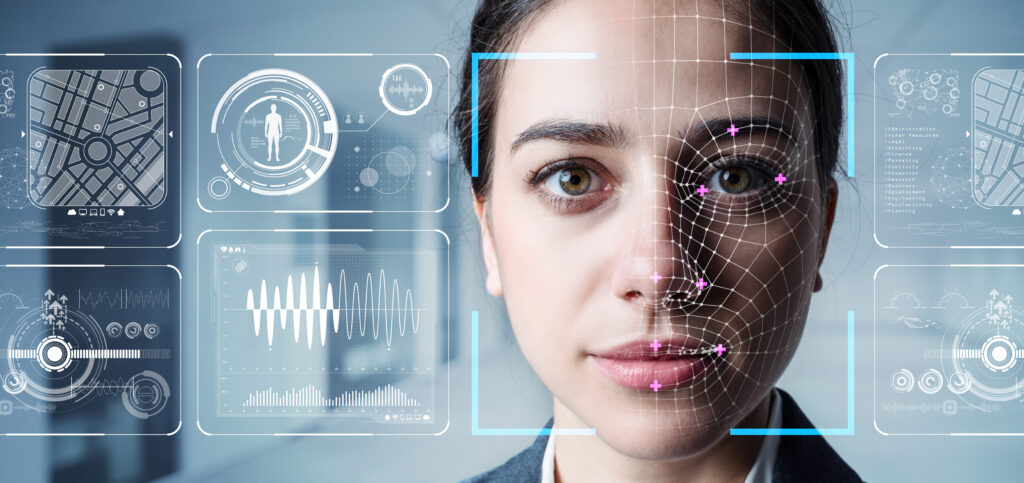How biometrics can increase patient safety and overall efficiency
Patient misidentification remains a challenge with traditional demographic information, and consumer confidence in biometrics has grown over time.

Patient misidentification is a growing problem in the United States, the results of which can be dangerous and even fatal.
Traditional identification methods, such as using patient names and dates of birth, are prone to errors and can result in duplicate records. Compounded by the increase in demand for medical care post-pandemic and the nationwide nursing shortage, patient misidentification can lead to catastrophic medical errors.
However, the remarkable advancements in biometric technology, specifically facial biometrics, offer a promising solution to improve patient identification accuracy. Trust has carefully been built around the security, efficacy, reliability and accessibility of facial biometric software, and the table is set for its widespread integration into healthcare in 2024.
Misidentification realities
Imagine that you’re going to the doctor’s office for a routine cancer screening. After your visit, you receive a clean bill of health, and you’re relieved. You attend your next routine screening the following year and a shocking mistake is uncovered. The radiologist discovers that the results of the previous screening were misfiled under a deceased patient with the same name. The cancer has since spread significantly. As you discuss potential treatments, you realize this mistake could cost you your life.
This is the heartbreaking potential of patient misidentification. Medical errors resulting from misidentification can lead to medication errors, allergic reactions, treatment delays, misdiagnosis, and privacy breaches. A 2021 Black Book study revealed that on average, 24 percent of an organization’s patient records were found to be duplicates. This number is significantly higher than the 10 percent duplicate rate that AHIMA and other studies previously reported as the industry average.
Many organizations rely on manual information like name and date of birth to identify patients, which are not unique identifiers, especially in larger populations. Manual information also relies on individuals providing accurate and up-to-date information. However, patients may provide incorrect or outdated information, intentionally or unintentionally.
Interoperability is another challenge, because manual identification methods do not easily facilitate data exchange between healthcare systems. In an increasingly interconnected healthcare landscape, relying on manual information can hinder data exchange and continuity of care. These methods are also more susceptible to fraud and identity theft. Without robust verification processes and additional layers of security, individuals can impersonate others, leading to unauthorized access to records and insurance fraud.
In light of these issues, healthcare organizations have turned to innovative solutions like biometrics to enhance data integrity, positive identification rates, and ensure patient safety.
Benefits of facial biometrics
Most of us are familiar with facial recognition because we use it regularly on our smartphones. By capturing and analyzing facial characteristics, such as the distance between the eyes, the shape of the nose and the contours of the face, facial biometrics can create a unique identifier for each patient. This identifier can be linked to a healthcare system’s comprehensive and standardized electronic health record (EHR).
Implementing facial biometrics for patient identification can eliminate the need for manual identification, reducing the risk of errors and duplicate record rates. By creating a unique identifier based on facial characteristics, healthcare organizations can ensure that each patient is correctly identified, regardless of variations in patient information or a lack of standardized identification practices. This not only improves data accuracy but also enhances patient safety and streamlines healthcare processes.
In addition, facial biometric software is convenient, intuitive and accessible. Touchless verification and record matching at registration streamlines the check-in process, saving time for both patients and healthcare staff. It also enhances privacy during check-in because patients don’t need to verbally provide personal information.
Biometrics also can verify unconscious patients during check-in, ensuring accurate identification even in critical situations. Many solutions also offer liveness detection technology to prevent spoofing or fraud.
The future of biometrics
While biometrics have the potential to revolutionize patient identification, the biggest roadblock to integrating facial biometrics technology in healthcare has been privacy and security concerns. Healthcare organizations must ensure that patient data is protected, and that biometric data is securely stored and accessed.
The consumerization of facial biometric technology by smartphone companies has built trust in consumers and regulators — facial biometrics now are used to protect the deeply personal information stored in our phones, like our bank details, conversations and pictures, so it’s clear that the technology can streamline issues in healthcare as well.
Naturally, healthcare organizations must adhere to privacy regulations like HIPAA to maintain patient trust and comply with legal requirements. Obtaining patient consent and providing education about the purpose, benefits and privacy considerations of facial biometrics will be a crucial part of ensuring patient acceptance and participation.
Between the risk of medical errors, vulnerable cybersecurity protocols and the ever-growing care delivery demands in the U.S., it’s clear that the healthcare industry requires a future-focused solution that securely, conveniently and reliably identifies patients. Biometric technologies are the tested and trusted answer — and they’re already helping healthcare organizations operate more efficiently.
As more healthcare organizations adopt mobile devices to improve access to information, we're also seeing facial biometrics being adopted for password-less authentication for clinicians. These solutions are fortifying cybersecurity initiatives, enabling clinicians to provide care more efficiently and bolstering digital transformation efforts in the healthcare sector.
The use cases for facial biometrics in the healthcare sector are still being discovered; healthcare organizations must begin determining how they can best use this technology to improve their processes, safeguard against network breaches and provide better patient care.
Implementing facial biometrics enhances patient safety and data accuracy while streamlining healthcare processes and protecting patient privacy and security. As technology continues to advance in 2024 and beyond, facial biometrics will play a crucial role in reducing the risks of patient misidentification and improving the overall quality of care in healthcare organizations.
Sean Kelly, MD, is chief medical officer and senior vice president of customer strategy for Imprivata, the digital identity company.